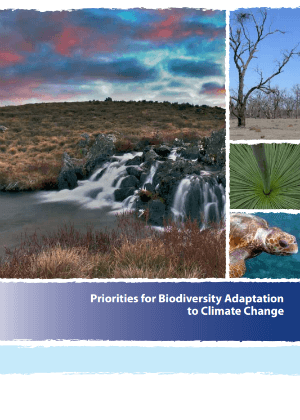Projections of future changes in climate in New South Wales include increasing temperatures and temperature extremes, increasingly severe droughts, rising sea levels, possible decreasing rainfall, regional flooding and reduced water availability in the Murray-Darling Basin.
Australia has experienced cycles of climate change in the past, but the current changes are more serious due to the rate of change in atmospheric greenhouse gas levels and temperatures, and because ecosystems are already stressed by other human impacts.
The most vulnerable ecosystems include coastal ecosystems, alpine areas, rainforests, fragmented terrestrial ecosystems and areas vulnerable to fire or low freshwater availability.
Species that could become endangered or extinct include those living near the upper limit of their temperature range (for example, in alpine regions); those with restricted climatic niches; and those that cannot migrate to new habitats due to habitat fragmentation or lack of alternatives.
Helping biodiversity adapt
Addressing the impacts of climate change on biodiversity will require a long-term effort and new ways of thinking. To help species and ecosystems cope with climate change, the Office of Environment and Heritage developed Priorities for Biodiversity Adaptation to Climate Change (PDF 1MB).
These priorities focus on 4 key areas:
- enhancing our understanding of the likely responses of biodiversity to climate change and re-adjusting management programs where necessary
- protecting a diverse range of habitats through building a comprehensive, adequate and representative public reserve system in New South Wales, with a focus on under-represented bioregions
- increasing opportunities for species to move across the landscape by working with partners and the community to protect habitat and create the necessary connections across landscapes
- assessing adaptation options for ecosystems most at risk from climate change in New South Wales.
The document draws on the NSW Climate Impact Profile which has assessed the likely impacts of climate change on species and ecosystems in NSW.
This document is a Statement of Intent in response to the listing of climate change as a Key threatening process.


